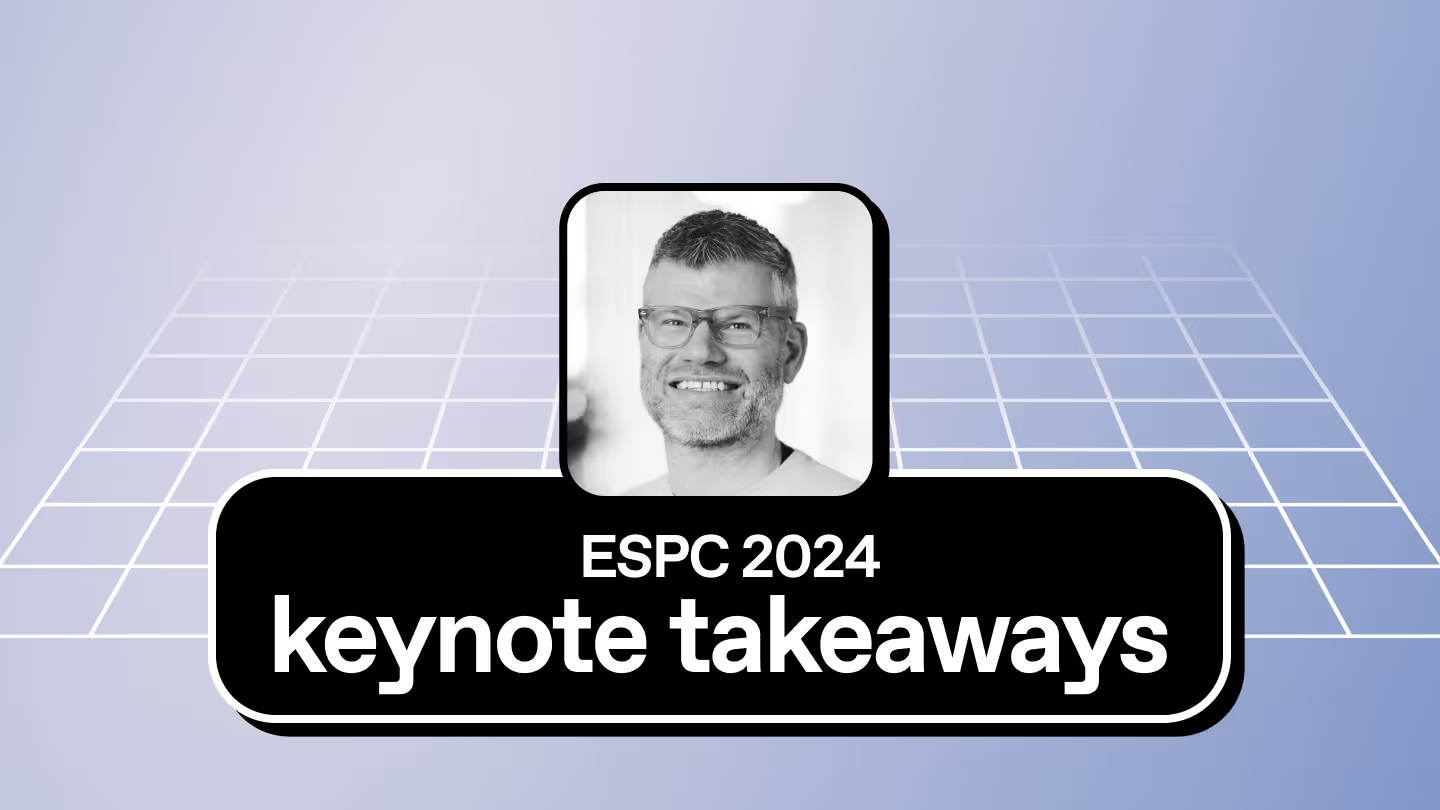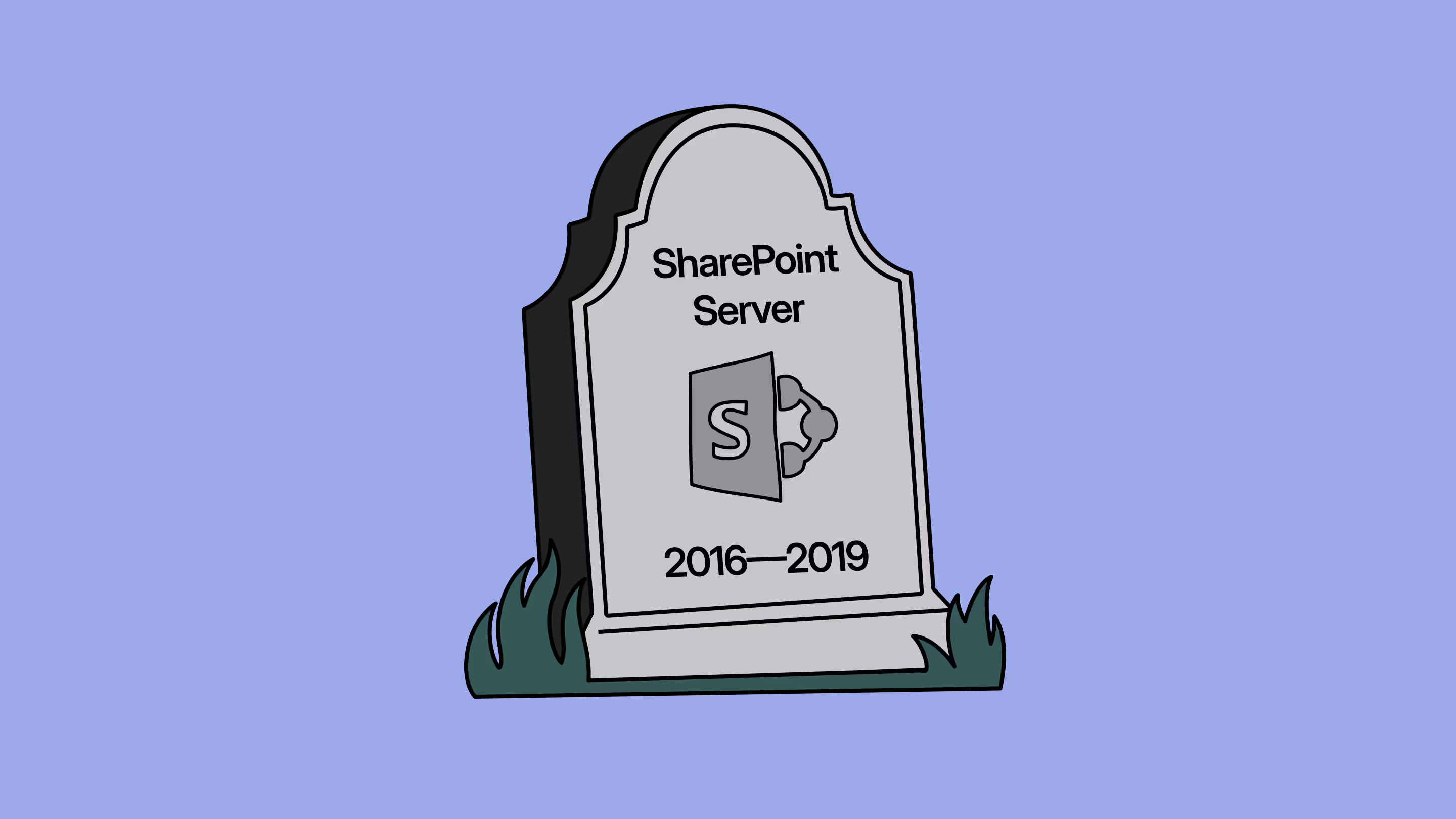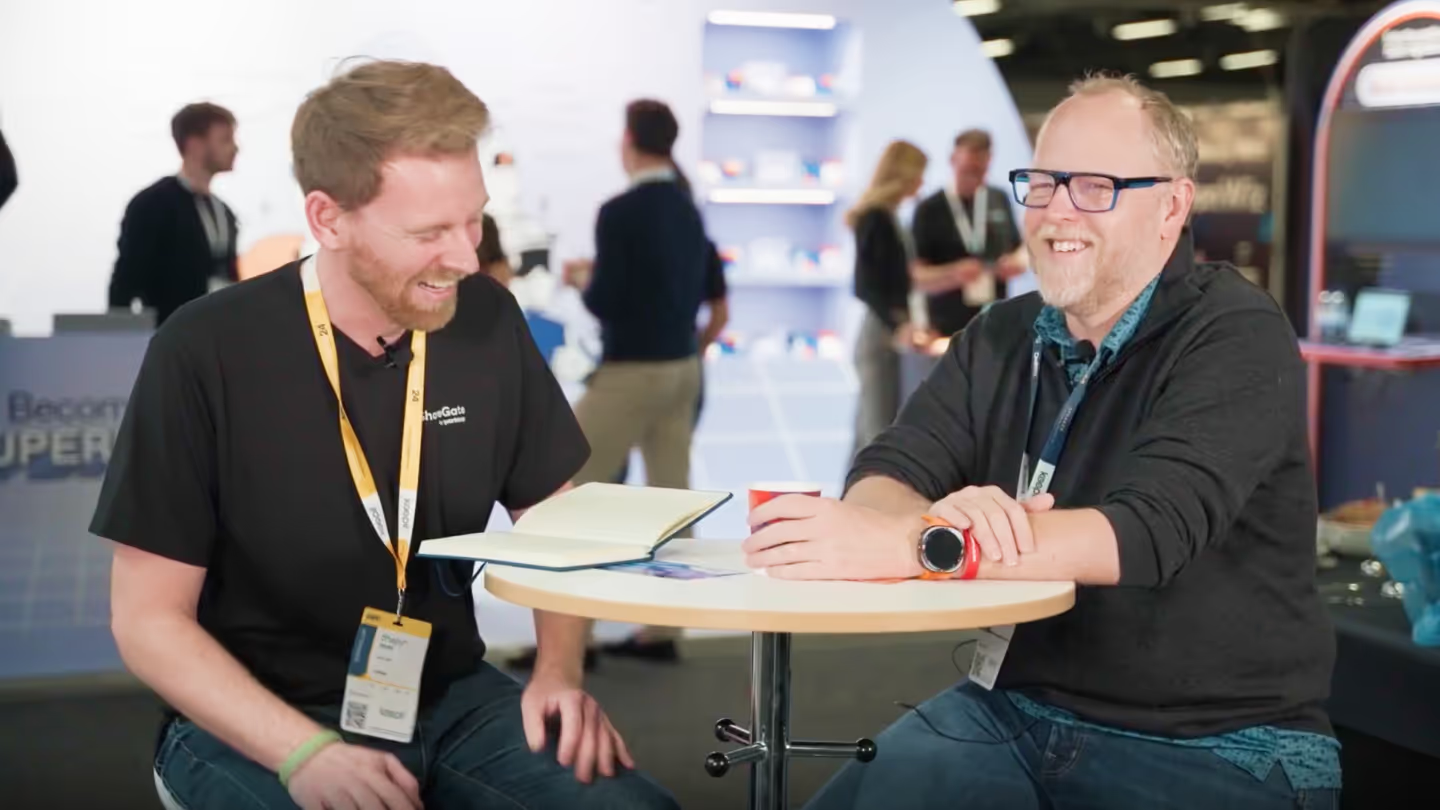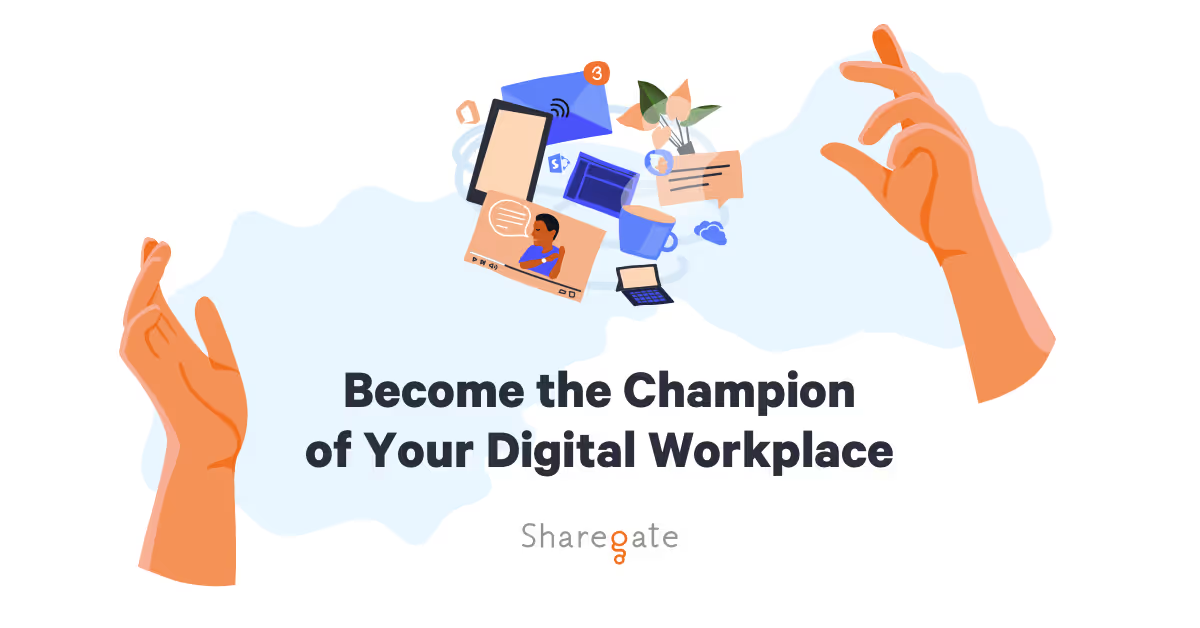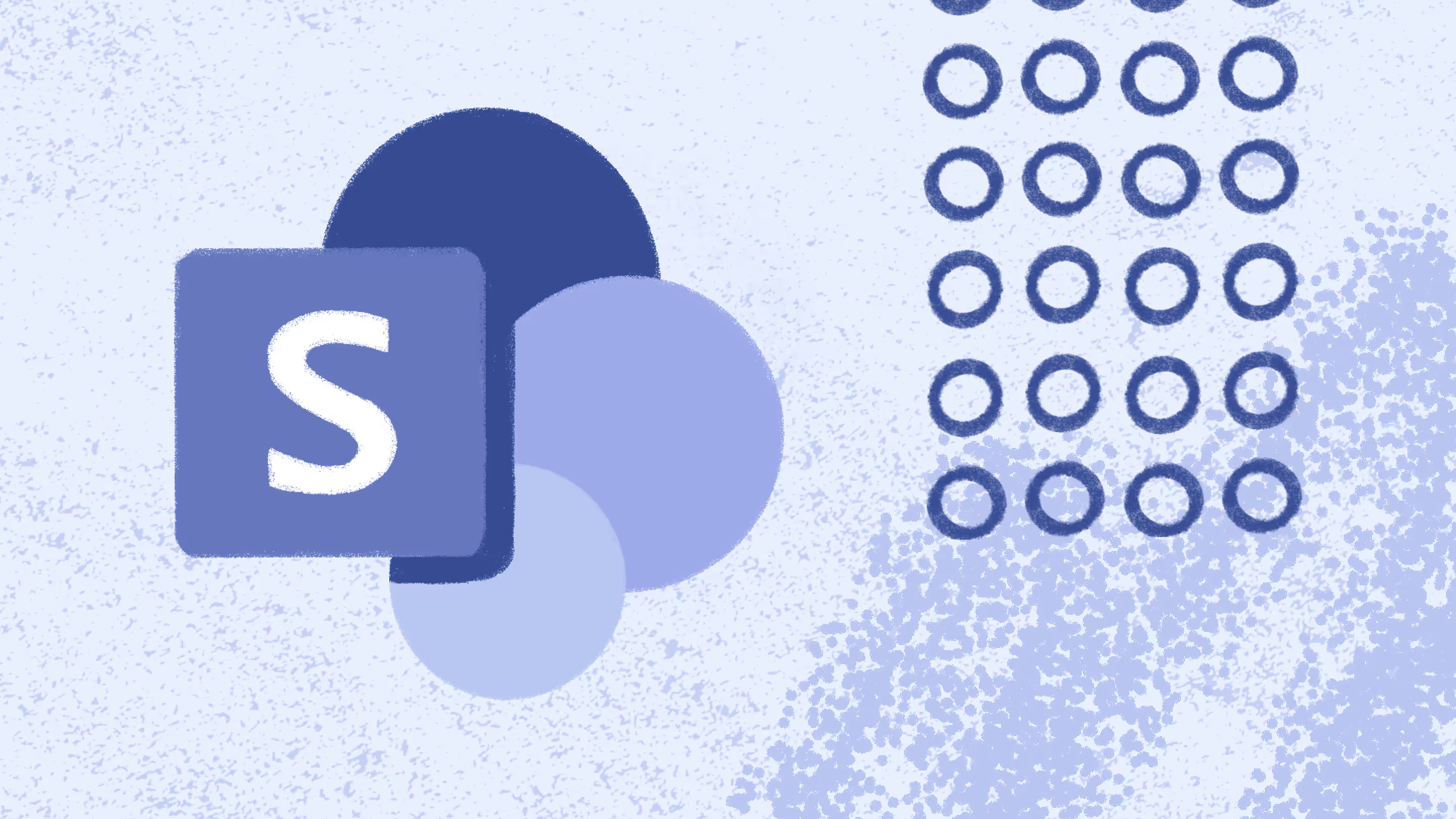Building a future-ready Microsoft 365: Aligning AI, governance, and adoption
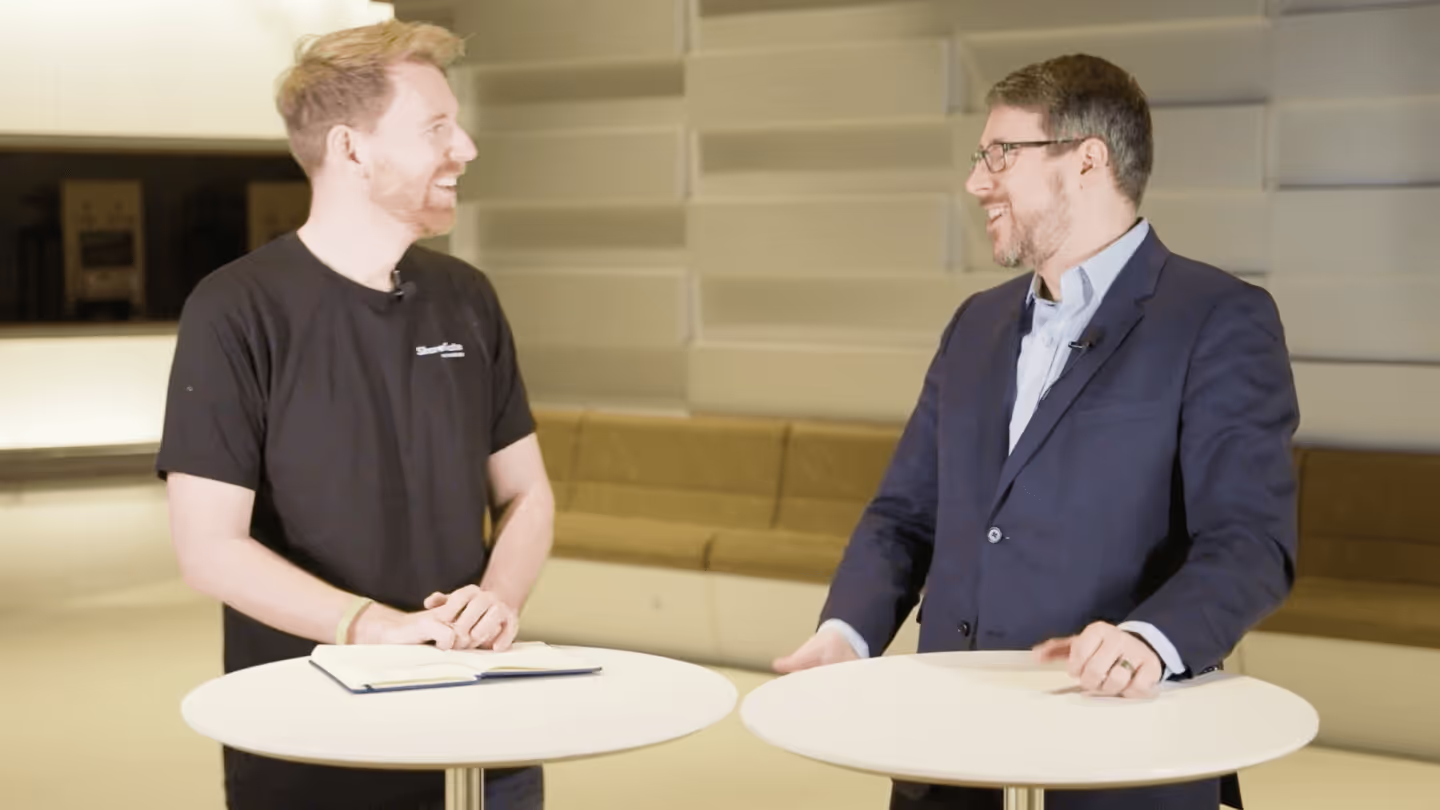
Table of contents
Discover why AI success in Microsoft 365 depends on strong governance, content readiness, and continuous adoption—insights from Microsoft MVP Richard Harbridge.
AI is here—and it’s pushing IT leaders to re-examine their Microsoft 365 environments in a whole new light. But getting ready for tools like Microsoft Copilot isn’t just about turning on a feature. It’s about making sure your content, governance, and adoption strategies are ready to support AI in a sustainable way.
We sat down with Richard Harbridge, Microsoft MVP and CTO at 2toLead, to talk about what it really takes to unlock AI’s potential in Microsoft 365—and where most organizations are struggling. From content that’s not cloud-ready to governance that stops at the container level, Richard shares what’s holding teams back—and what IT leaders can do to get ahead.
If you’re trying to balance the excitement of AI with the realities of day-to-day IT, this conversation is packed with practical insights and strategies. Richard’s perspective will help you think beyond deployment and start building a foundation that truly supports Copilot and the future of work in Microsoft 365.
What are some challenges you face in your role?
I get the luxury of being able to do a lot of technology roadmaps. So sitting down with customers where, you know, they already have maybe partners, they already have a bit of a strategy, but then there’s gaps in it. So, maybe they don’t quite know how their employee experience is gonna evolve in this post-generative AI era. Or they’re not quite sure about the strategy of the Copilot deployment they’re doing. Is it kind of set it and forget it from an IT perspective?
And so a lot of times what we’ll do is we’ll come in and we’ll start to talk about—where are they on their journey? And a lot of times there are these gaps. Everyone has them. Once you start to talk through those gaps, you start to give them directions on how to resolve issues.
We just find visualizing that with roadmaps is one of the better ways because then they can take that internally to other leaders and say, “This is what we’re hearing. Does that resonate with you?”
Then we get more people in the room, more people talking about the same issues and challenges. And that’s been really great.
When we take something like AI, it’s easy to think—we just need to enable, we just need to get adoption right, we just need to do deployment, allocation of licenses, and things like that. But, actually, there’s a lot more underneath it.
And in particular, when we take something like AI, it’s easy to think—we just need to enable, we just need to get adoption right, we just need to do deployment, allocation of licenses, and things like that. But, actually, there’s a lot more underneath it.
When we talk about these new agents in SharePoint, they unlock more value from your content, but that only makes sense if that content’s in the cloud, if that content is in SharePoint, if it’s structured in a way where we have ownership that’s distributed with people.
Customers who have legacy debt, now they need to migrate from other systems first, that’s a big challenge.
Most IT departments know how to responsibly enable AI, but they’re rnot confident on how to do it in a scalable, sustainable way.
And that concern comes from this idea where for a lot of them, they have the service model stuff, right? And maybe the container, you know, site provisioning, teams provisioning, how do we manage sites and teams at sensitivity levels, lifecycle management, things like that.
But when you get to the document level, that’s a big divide, and very few organizations have made that transition to the document level, it’s document-centric protection and things like that.
Most IT departments know how to responsibly enable AI, but they’re not confident on how to do it in a scalable, sustainable way.
And so, a lot of times it ends up becoming—okay, let’s do a Purview acceleration and get this implemented. Or let’s do an exploration to fix this container-level stuff so that you can focus on getting to that next level of governance and support.
So, it’s a mix of things, but always exciting because every customer has a unique spot in their journey they’re in, even if the pathways and solutions are very similar.
When did you start using ShareGate? Was there a specific problem you were looking to solve at the time?
I’ve been in the SharePoint space for 20+ years. And, in the beginning days of ShareGate, it was a simple migration tool. It was a lot easier to use than some of the other tools on the market. And we saw a lot of customers gravitating towards it.
So, for price point, for a variety of reasons, they would all use it, and we just saw it all the time. Whenever we’d go to a customer, we’d let them know that there are a couple options. And they’d say, “Oh, we’re already looking at ShareGate,” or “We’ve already got ShareGate.” And then over the years, you have this journey where lots of customers have already had it and kept it because there’s so much reorganization and optimization that we continually have to do post-migration.
Lots of customers already have it and keep it because there’s so much reorganization and optimization that we continually have to do post-migration.
You might do one migration, but then eventually, you realize you pay this tax almost, where your navigation structure, the security, etc. need to be reorganized regularly.
And, it’s funny. Even today, Microsoft doesn’t really have good tools for that, right? If you wanted to do first-party restructuring of your organization, you’re really limited with Microsoft’s out-of-the-box tools.
Now for content, you can do it. I do like the copy and move capabilities they added, that make it easier for folders or individual pieces of content.
But for sites or structures, you need a tool like ShareGate. And so, it’s just nice that you guys have such a strong market representation because it solves a lot of problems when, we check that box to get ShareGate and the customer says, “Oh yeah, we already have it.” We’re like, perfect! Now we can use it in this initiative or this project and often in ways that you don’t expect because, again, it just makes restructuring and other things that much easier and more accessible.
We recently released a Copilot readiness assessment tool—have you had a chance to check it out?
I did play with it, yeah. Every customer wants more ways to assess their tenant and readiness.
In 2024, the emphasis was on—how do we get AI-ready and how do we accelerate our journey? And look, for a lot of people that’s still true in 2025, but it’s also about—how do we accelerate return on investment in AI? How do we accelerate that journey from implementing this technology to scaling it and then really driving more realization of value?
And I think in this particular transition, what I’m excited about is there’s really obvious things like inactive sites, like figuring out how to organize those containers, those little spaces, which ShareGate’s Copilot readiness assessment can help with.
The more voices we have in the ecosystem—whether it’s vendors, whether it’s partners, whether it’s Microsoft themselves—saying here’s a way to get ready, here’s a way to accelerate your return on investment journey, I think that’s just better for everyone because there’s always a slight different perspective.
In 2024, the emphasis was on—how do we get AI-ready? And look, for a lot of people, that’s still true in 2025, but it’s also about—how do we accelerate return on investment in AI?
I just think every customer needs to spend more time on those things because it’s not an intractable problem. This is a complex, not a complicated, problem.
The complicated problems are more about insecurity and how AI needs to be addressed from not a security perspective, but an insecurity perspective in the organizations. But, you know, the security, the operational mandates, the question of how we implement this effectively—I think having more tools for that makes a big difference.
So I’m a big fan of, the inactivity reports, the sharing permission scenarios, things like that that are just easy. Being able to have those pre-built reports saves a lot of time.
As organizations roll out tools like Copilot, what tools do you think will help with its adoption?
There are definitely some challenges with getting people to actually use it and use it effectively.
When we think of strategic investments, like for example in the pandemic, we all understood that you had this journey where you had to transition for hybrid work.
And when we did that, a lot of organizations were a little bit further ahead, so it’s a little bit easier. Some had a really steep climb. And the organizations that invested then and since in employee experience have had a bit of an advantage.
No one leaves an organization because the compliance training at another company is way better. They leave because the knowledge, the training that they want—which is almost always peer led—is not available the way they want it in their job.
A lot of that stems from taking employee experience and not doing the traditional thing, but asking—how do we do social learning? How do we take onboarding and not make it where only HR and these top-level people control checklists and management, but actually say, “Hey, you’re a department lead. How would you like onboarding to work?”
I know ShareGate is by WorkLeap, and WorkLeap has different tools there. One of my favorite examples in WorkLeap that I think there’s no equivalent to in the Microsoft stack is the onboarding tool. I really like it. It fits that need where you stretch into departments and they figure out their onboarding.
Now you might be asking, what does that have to do with AI? Well, it’s the same idea. We should be asking, how do I do drip-fed campaigns—with emails, checklists, motions—as people are onboarding to Copilot?
You have to have some sort of strategy where you’ve got training and peer-led, team-based nominations. And then I think that onboarding is a really important mechanism.
Your want to use Viva Learning in the academy? Go for it. You want to use WorkLeap Onboard or LMS? Use that.
But at the end of the day, you have to have some sort of strategy where you’ve got training and peer-led, team-based nominations. And then I think that onboarding is a really important mechanism to the point that we do a lot of, like, workshops with the customers where we talk about what is the AI onboarding experience and how does that get nuanced or tailored based on different audiences.
If you’re low digital skills, how is that different from someone who has high digital skills? If you’re a manager, how is that different from an individual contributor? And they should be. We should tailor these experiences for onboarding.
If you express interest in certain areas, which we can do with these new onboarding experiences, then you could say, “Based on those interest areas, here’s some additional kind of onboarding.” Or there could be onboarding level one, two, three, and four.
And again, even just looking at the data from that and then asking—how do people engage with that experience? Where was it resonating most? That helps us improve that moving forward.
You have to tackle this like onboarding-as-a-service or adoption-as-a-service.
Because a lot of this AI stuff isn’t just that you’re rolling out Copilot. It’s also the fact that in six months or a year, we’ll have agents, we’ll have new experiences. It’s going to change, and so you’re going to have to do another onboarding.
It’s kind of like you have to tackle this like onboarding-as-a-service or adoption-as-a-service. And so, I know I picked on onboarding a lot there, but I think it’s a good example of something that’s underestimated in terms of impact.
Traditionally it’s only in the HR view, but it’s something that IT and technology can lend a big hand in making more accessible and using in a context for something like Copilot.
How do you see IT’s and HR’s roles evolving as AI moves from simplifying processes to really driving business transformation?
This is a new muscle for a lot of IT leadership. It’s certainly a new muscle for a lot of HR groups. But HR and IT—is all about simplification.
So we take something that’s complicated and we make it complex and then we simplify it, right? That’s like IT’s whole purview. That’s what HR does, too.
But the challenge with that is in the AI era, what we need is a line of business leaders who have the multidisciplinary skills of those groups, but to advance what they want. And so that’s a proactive model.
That’s a model where instead of simplification, we need to proactively work with these units and do business transformation, innovation, support, and that’s hard for IT.
How do we actually engage in what we’ve always wanted to do in IT—which is business transformation—and slowly move away from firefighting.
That’s why a lot of organizations will have a Chief AI Officer or an AI-enablement group, whatever you wanna call it. And HR and IT report to it over time because this group is more like the CFO or the finance team where it works across lines of business, whereas these groups are, again, still most of the time oriented around simplification.
So even at a strategy level, it’s easy to talk about little tactics and then forget that these are big shifts for IT. Kind of like when we went from servers to services in the cloud era, now we’re asking: How do we actually engage in what we’ve always wanted to do in IT—which is business transformation—and slowly move away from firefighting and reactive stuff.
And, that only happens when you pay that technical debt. That only happens when we consolidate and we organize, optimize, and secure those things.
The carrot—the ROI for AI—is so high that it’s paying for all that work right now, which is great.
Is there anything else you’d like to add about ShareGate, AI, or the future of IT?
It’s easy in life to say, “We have a problem, what’s the tool for it?” And I think when it works best is when of what and where we want to be. Like, here’s the destination, here’s our goal, here’s what the future org-style, type, execution we want. And then most of the time, you need tools to fill gaps in order to accelerate that transformation.
And I think if there’s a way to pay for something that has wizards and codifies or simplifies steps in that process, you should absolutely do it.
I think sometimes organizations want to do it in house, and that’s fine. But the more you do that in house—it’s like this fallacy where we always think it’ll be easier. We’re very optimistic in IT!
This load and burn that we spend on everything from migration to consolidation to orchestration to permissions reporting to things like that, it burns cycles and it does come at a cost.
And each time you’re burning those cycles, you’re not focusing on that forward-thinking stuff, the transformational stuff.
So, for anyone who’s on the fence wondering if they really need to buy a tool, I’m not saying to spend recklessly, but I do think anytime you can offset something with a tool, I really encourage people to explore it. Because it saves so much time in even understanding what are the things we should consider.
Just pick a tool and look at the gap analysis. Why does this tool still exist in the marketplace? Because Microsoft still has gaps. Just that alone is worth understanding.
What are those gaps? We need to be aware of them and avoid some of the complications that come with them with a tool like ShareGate.
AI is accelerating change in Microsoft 365—but success depends on more than just turning on new features. As Richard shared, it’s about building strong foundations: cleaning up content, tightening governance, and rethinking adoption as an ongoing process. Tools like ShareGate are designed to help IT teams manage that complexity, reduce busywork, and focus on driving real business impact.
Ready to see where your environment stands? Talk to a ShareGate expert to see how our Copilot readiness assessment tool can help you not only deploy AI, but get real ROI from it.


.svg)
%20(1).avif)

.jpg)
.jpg)



